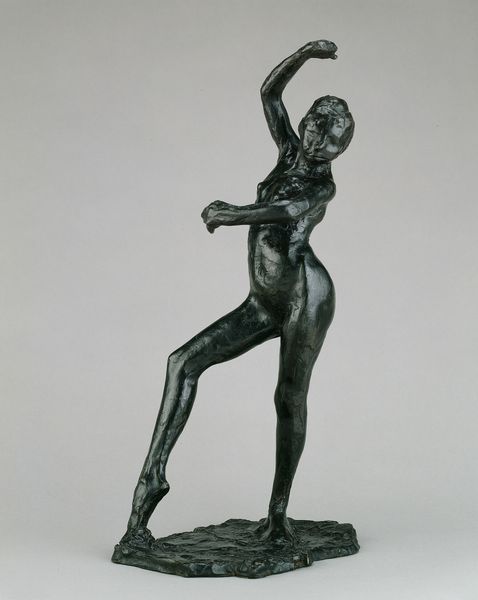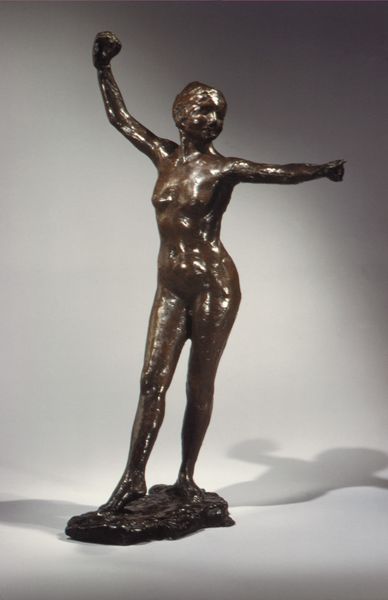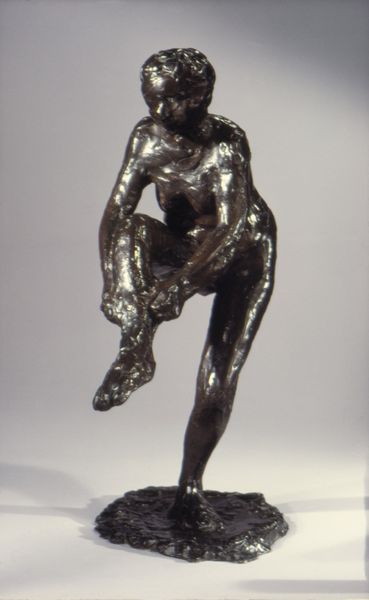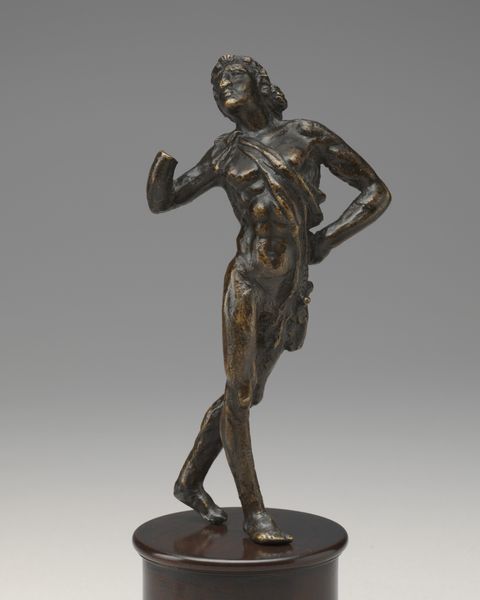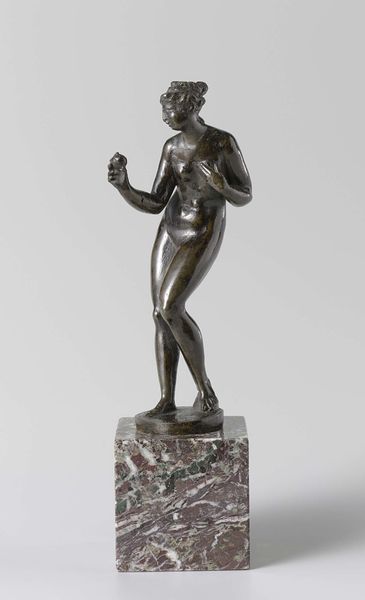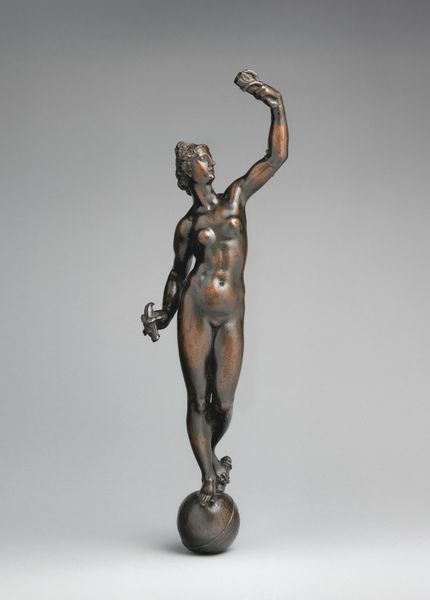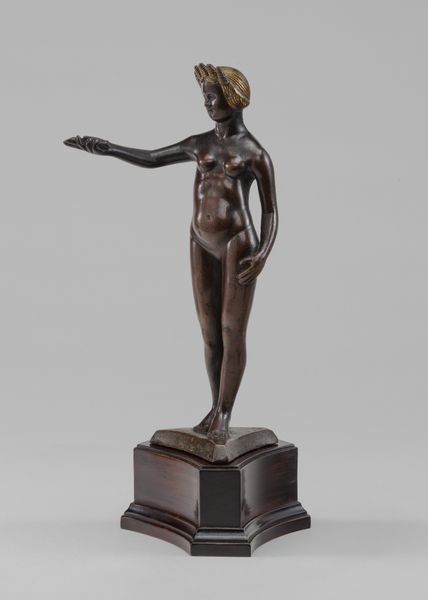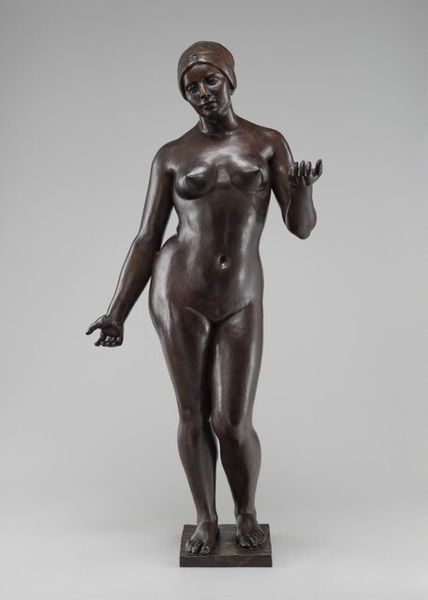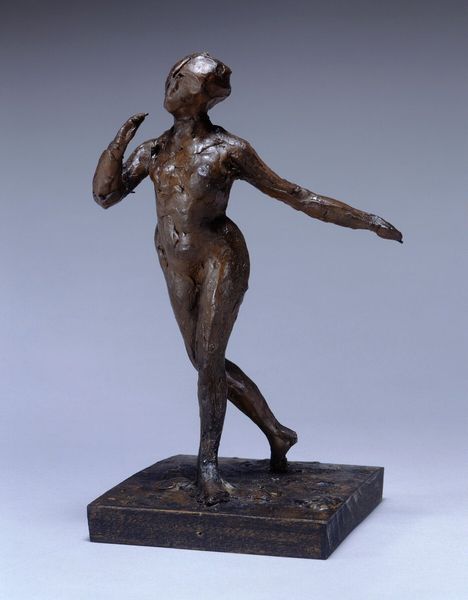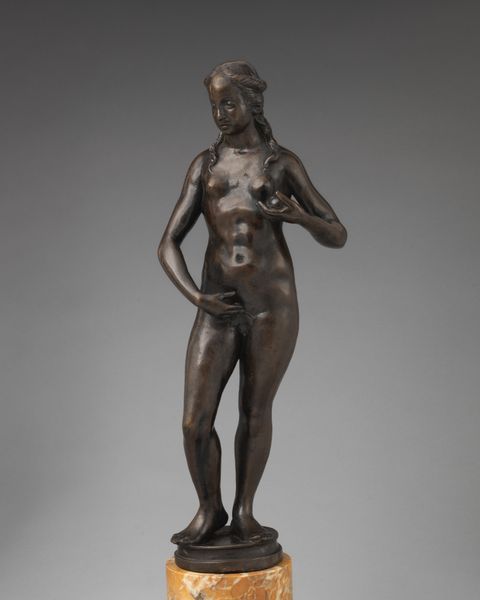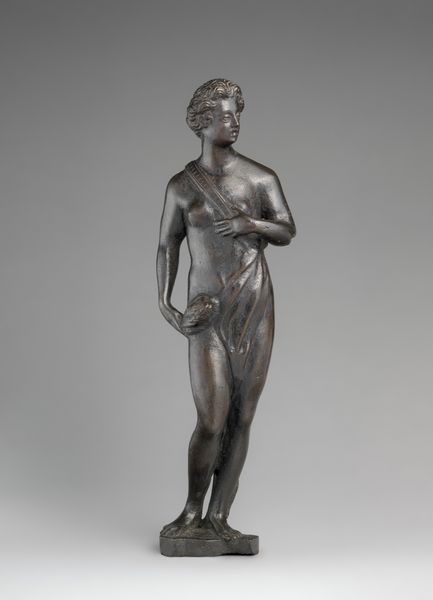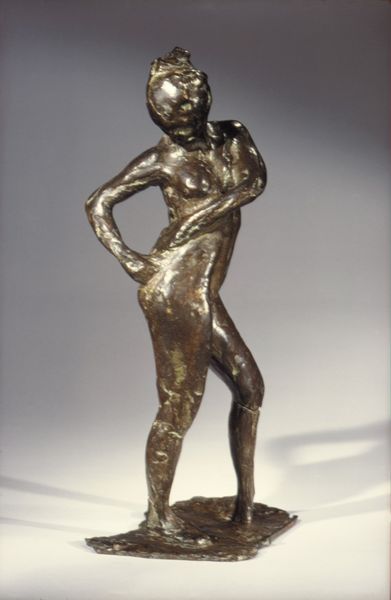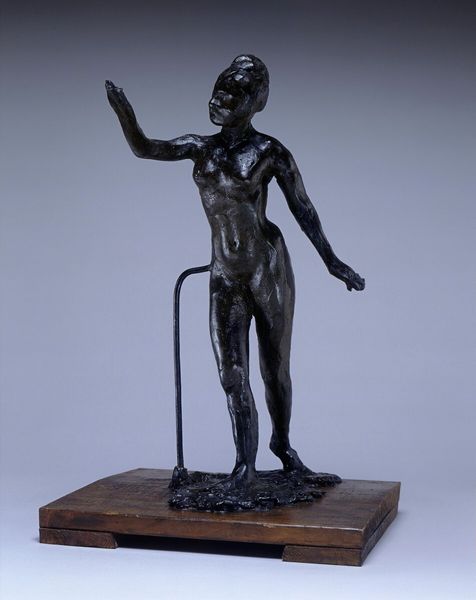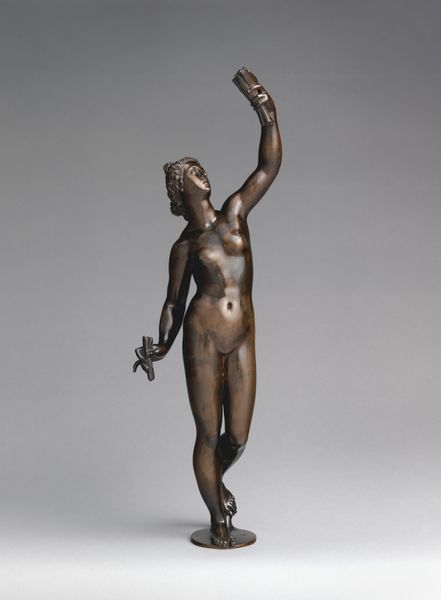
bronze, sculpture
#
portrait
#
sculpture
#
greek-and-roman-art
#
bronze
#
figuration
#
sculpture
#
united-states
#
history-painting
#
realism
Dimensions: 76.2 × 50.8 × 48.3 cm (30 × 20 × 19 in.)
Copyright: Public Domain
Curator: Frederick William MacMonnies created this bronze sculpture, "Diana," after 1889. What strikes you most about it at first glance? Editor: There’s a cool confidence in the figure's stride, an almost playful elegance. It's dynamic. I wonder about its initial reception in the context of shifting gender roles at the time. Curator: Observe the way the light reflects off the bronze surface, the texture expertly capturing the dynamism you describe. Consider, too, the composition itself; the positioning of limbs forming intersecting diagonal lines that add to this energy. MacMonnies truly captured her in media res. Editor: Yes, the high polish on the bronze invites light and movement. However, situating this 'Diana' in the late 19th century United States reveals a more complicated narrative. Public sculpture, particularly nudes, became embroiled in debates about public morality and the "ideal" female form. How was MacMonnies engaging with or perhaps even challenging those debates? Curator: The challenge, I believe, is more in the execution than the intent. The idealized realism adheres to classical ideals, but MacMonnies uses light, form and pose to convey a thoroughly modern naturalism, a break with tradition through technique and skill. Editor: It’s difficult to divorce these 'classical ideals' from their implications. A seemingly benign nude can also perpetuate exclusivity and erasure, particularly given whose bodies are historically represented, and which are noticeably absent. Also, "naturalism" often reflects a specific cultural lens and bias that favors certain modes of seeing the body. It’s vital to deconstruct who has historically benefitted from defining such ideals. Curator: But there is so much focus on how MacMonnies precisely executes his representation of form and movement; her weight seems about to shift. The mastery of line and balance is central to appreciating the aesthetic qualities inherent in this sculpture. Editor: And yet, we cannot simply consider a work’s aesthetic elements in isolation. Analyzing what Diana symbolizes culturally, what bodies are privileged, helps reveal not just the artistry, but also its lasting ideological impact. Art never exists in a vacuum. Curator: A compelling argument to be sure. For me, it’s enough to appreciate MacMonnies' talent for imbuing bronze with the essence of human motion. Editor: And for me, it's just as crucial to analyze how artworks, even ones celebrated for their technical skill, can subtly reinforce prevailing societal structures. These bronze figures speak volumes, in ways we often don’t realize.
Comments
No comments
Be the first to comment and join the conversation on the ultimate creative platform.
